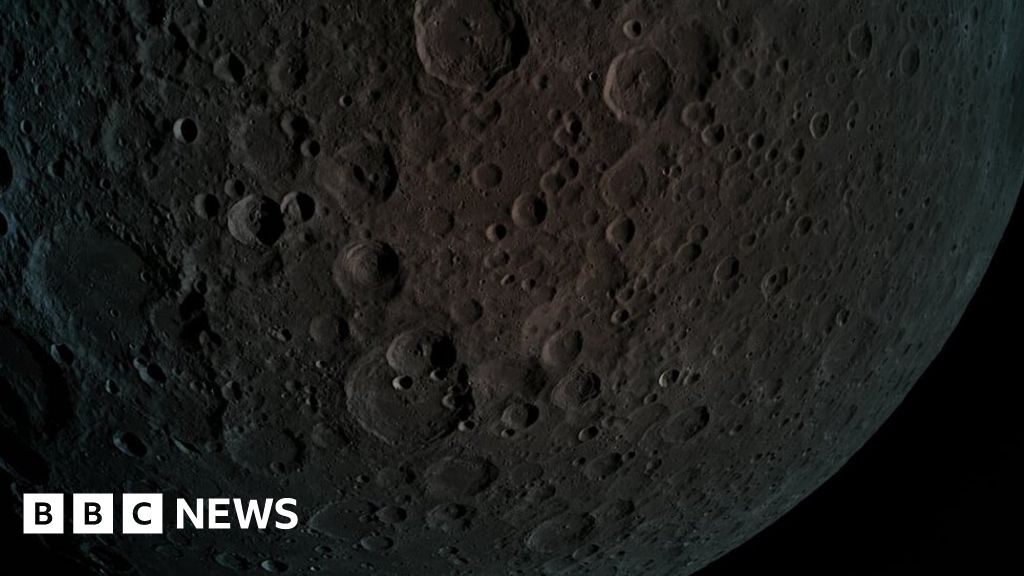
The first privately funded mission to the Moon will attempt to land on the lunar surface today.
The Israeli spacecraft - called Beresheet - will try for a soft touch down, before taking pictures and conducting experiments.
Until now, only government space agencies from the former Soviet Union, the US and China have achieved this.
The mission has cost about $100m, paving the way for future low-cost lunar exploration.
Beresheet, which is Hebrew for "in the beginning", is a joint project between SpaceIL, a privately funded Israeli non-profit organisation, and Israel Aerospace Industries.
Morris Kahn, the founder of SpaceIL, told BBC News: "The landing will be extremely challenging.
"But we've got good engineers, the spacecraft has responded well to our instructions over the last two months...
I'm reasonably confident but a little nervous."
Why has it taken weeks for Beresheet to get to the Moon?
In space terms, the Moon is a mere hop from the Earth, and most missions take a few days to get there.
But the Beresheet mission, which launched on 22 February from Cape Canaveral in Florida, has spent weeks reaching its destination.
Its journey has taken it on a series of ever-widening orbits around the Earth, before being captured by the Moon's gravity and moving into lunar orbit on 4th April.
The average distance to the Moon is 380,000km (240,000 miles) - Beresheet has travelled more than 15 times that distance.
And the main thing driving this has been cost.
Instead of sitting alone on a rocket that would put it on the perfect trajectory to the Moon, it blasted off on a SpaceX Falcon 9 rocket along with a communications satellite and an experimental aircraft.
Sharing the ride into space significantly reduced its launch costs - but it has meant the spacecraft has had to take a much more convoluted route.
How hard will it be to land?
A soft landing on the lunar surface will be a major challenge for the Israeli spacecraft.
Key to its success will be a British-built engine, developed by Nammo in Westcott, Buckinghamshire.
The Leros engine has already provided the power to get the spacecraft all the way to the Moon, but it will also take Beresheet on its final descent.
The 1.5m-tall spacecraft has to rapidly reduce its speed, so a final firing of the engine will in effect slam on the brakes, hopefully taking the spacecraft to a gentle stop.
Rob Westcott, senior propulsion engineer at Nammo, said "We've never used an engine in this kind of application before.
"The big challenge is the fact that the engine is going to have to be switched on and get very hot, then switched off for a short period of time when all that heat is remaining in its thermal mass, and then fired up again, very accurately and very precisely such that it slows the craft down and lands very softly on the surface on the Moon."
The process should take about 20 minutes.
All of the controls for this have been uploaded and will be performed autonomously - mission control will have to watch on.
What will the spacecraft do on the surface?
Its first job will be to use its high resolution cameras to take some photos - including a selfie - and then send those back to Earth.
It will then begin to measure the magnetic field of the spot it's landed in, an area known as Mare Serenitatis.
Monica Grady, professor of planetary and space science at Open University, said: "They'll be looking at the landing site really closely, which will help to work out how the magnetic measurements of the Moon fit in with the geology and geography of the Moon, which is really important to understand how the Moon formed."
The lander also carries a reflector from Nasa, which help scientists to make accurate measurements of the distance between the Earth and the Moon.
The mission won't last long though - perhaps only a few Earth days.
Temperatures on the Moon are extreme, and as the Sun rises the spacecraft is unlikely to survive the heat.
How significant is this mission?
Over 60 years of space exploration, only three nations have made it down onto the Moon.
The former Soviet Union achieved the first soft landing with its spacecraft Luna 9 in 1966. Nasa followed this by getting the first humans to the Moon in 1969. Then, China's Change-4 spacecraft touched down on the far-side of the Moon earlier this year.
If their landing works, Israel will be the fourth nation to join this elite club.
But it's the low-price tag - and the fact that this mission has not been funded by a major space agency - that really makes this mission stand out.
Its cost of $100m is a fraction of what would normally be spent on a venture like this.
And Beresheet is not alone in pursuing low-cost lunar exploration.
Its origins lie in the Google Lunar XPrize, an international challenge offering $20m for the first privately developed spacecraft to land on the Moon.
And while the competition ended last year after no-one was able to meet its deadline (the foundation have subsequently announced they will award the Beresheet collaboration $1m for their achievement), other teams involved are also continuing with their efforts to get to the Moon.
Both Nasa and Esa have also announced their intention to use commercial landers to deliver scientific payloads to the lunar surface.
Follow Rebecca on Twitter.
https://www.bbc.com/news/science-environment-47879538
2019-04-11 12:42:53Z
52780265936972
Tidak ada komentar:
Posting Komentar